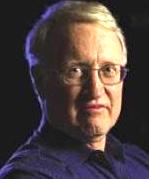Garth Illingworth
University of California, Santa Cruz

Garth Illingworth University of California, Santa Cruz |
 |
Hubble has revolutionized the discovery and study of the earliest galaxies through its exploration of the universe in the first billion years after the Big Bang. I will discuss what we have learned about galaxies during that epoch at redshift z>6 from the remarkable HST and Spitzer imaging surveys (e.g., GOODS, HUDF/XDF, HUDF09/12 and CANDELS), as well as surveys of lensing galaxy clusters (e.g., the Hubble Frontier Fields - HFF). Lensing clusters provide extraordinary opportunities for characterizing the faintest earliest galaxies, but also present extraordinary challenges. Analysis of early galaxies found in the HFF images reveal compact star-forming regions that, remarkably, can be as small as today's globular clusters and dwarf galaxies. The results from deep surveys with Hubble, combined with the recent results from Planck, indicate that galaxies dominated the UV ionizing flux that reionized the universe. One of the greatest surprises came from the discovery of very luminous galaxies at redshifts z~11 to z~8, just 400 to 650 million years after the Big Bang. Hubble and Spitzer recently encroached on JWST territory by looking back through 97% of all time to confirm a z~11.1 galaxy. This is far beyond what we ever expected Hubble and Spitzer could do. Twenty years of astonishing progress with Hubble and Spitzer leave me looking to JWST to provide even more remarkable exploration of the realm of the first galaxies. I will discuss how the latest Hubble and Spitzer results on the sizes of star-forming regions in distant galaxies, on the star formation rate at redshift z~10, and from Planck indicating that reionization began around z~10, together have significant implications for the detectability of the "first galaxies" with JWST.
Garth Illingworth is a Professor at the University of California, Santa Cruz. He was a Miller Fellow at UC Berkeley, the Deputy-Director of the Space Telescope Science Institute, and in 2010 was awarded an honorary Doctor of Science degree at the University of Western Australia. He is the recipient of the 2016 American Astronomical Society Lancelot M. Berkeley New York Community Trust Prize for his work on the most-distant galaxies viewed with Hubble. He has been exploring for the earliest galaxies in the first 1-2 billion years of the Universe.